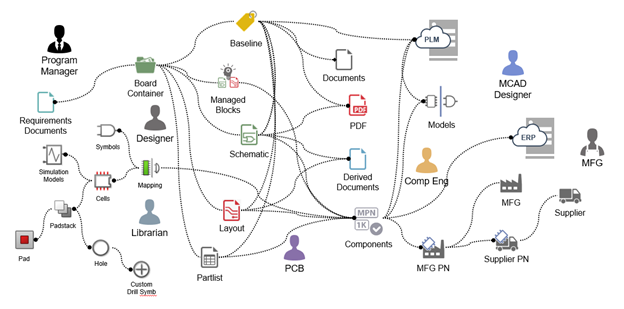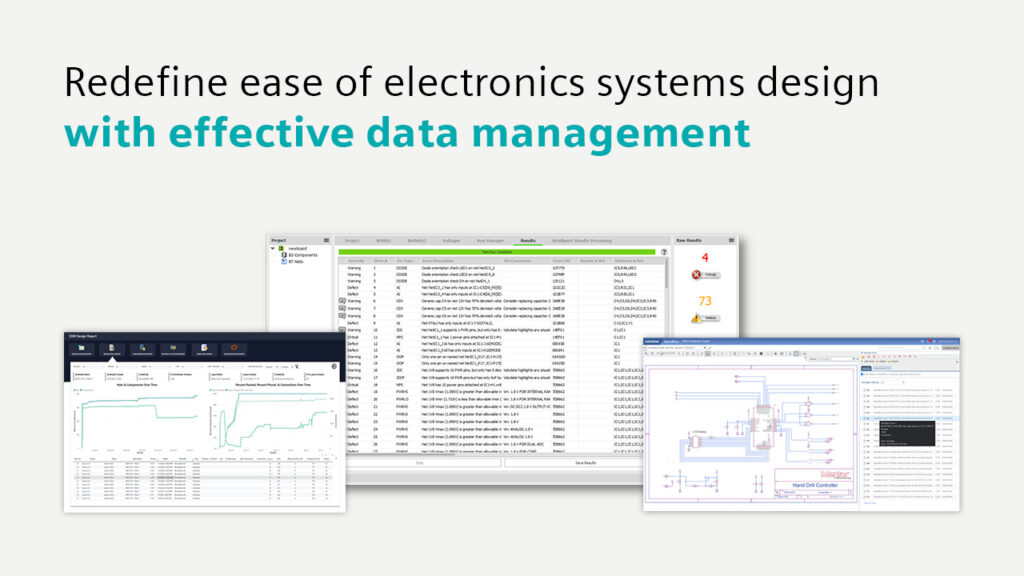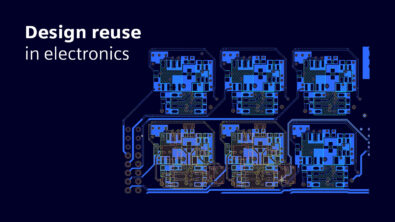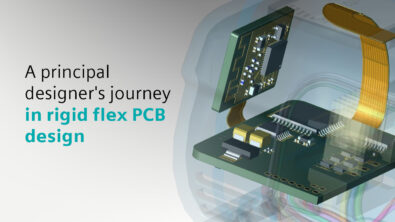Fundamentals of library and design data management

When it comes to electronic systems design, I’m often asked what a robust library and design data management system should include. A centralized library and design data management system should cover the full spectrum of data utilized in developing individual circuit boards or multi-board systems connected by cables. The types of data can be broken down into four categories:
- Library models: Components, metadata, documents, and electrical models allowing for schematic, layout, and electrical simulation.
- Managed blocks: Allow engineers to easily reuse known-good circuits including schematic, layout, and constraint data.
- Designs: Improve individual or team design with enhanced security, consistency, metric collection, and process control.
- Systems: Design and simulate multi-board systems using a parallel collaborative approach where global teams work in “real-time.”
The complexity of managing ECAD data

Within the electronics design domain, the digital thread is complicated, with many different kinds of data required at different stages of the process and by different stakeholders. Successful PCB design requires collaboration between a variety of experts from program managers to PCB designers to manufacturing experts.
To simplify all these digital threads, the centerpiece of your engineering process shouldstart with the components or corporate part numbers you use to create your designs. The corporate part numbers can be created and connected to your PLM, ERP and CIS systems – connecting your part numbers to your supply chain.
These parts are then used in your designs and as products become more complex, you also need to manage all the additional data that comes with such complexity such as the managed blocks you create in your design process and even the multi-board systems and their requirements and derived outputs.
With these considerations in mind, you will start to have an entire ECAD library managing dozens of objects and relationships such as symbols, cells, and simulation models. This creates a challenge to creating engineering processes and managing collaboration for the multiple users that are contributing to, creating and consuming this data.
The ideal library and design data management solution
The ideal solution is a library and design data management system that can solve for library model management as well as design data management, all while enabling collaboration and cross domain integration.
As an example, to solve the challenges of library model management, the Xpedition library management flow, provides:
- Part request driven component process
- Part Creation optimizing multi-user model management with on-line sources
- Library Distribution for filtering and providing timely model updates to users or other servers
- Designer Use Cases supporting part research and instantiation allowing for where-used collaboration
- Enterprise administration that controls security and multiple 3rd party integration options
To solve the challenges of work in progress design data management, the Xpedition design data management flow, provides:
- Project creation & access control supporting object-level permissions of design data.
- Design process that managed derived outputs, simulation, drawings, IP development, and a Multi-Board System design,
- Versioning & history allowing Engineers access to control their own data versions while maintaining historical information and relationships.
- Data mining of both project and custom ECAD information allowing for reporting and metrics collection.
- AND baselines that support configuring data sets for design reviews, Approvals for simplifying engineering collaboration, and Release and ECO for sharing data with the Enterprise.
Collaboration
To solve for collaboration Xpedition provides powerful web capabilities allowing the extended design team and stakeholders to collaborate and administer the system. The major functions are:
- Browse designs and download objects.
- Access to incoming and outgoing EDX Files as well as Inbox and Outbox EDX Queues.
- Access to Export Tasks activity history.
- Shows all read/unread notifications you received.
- Shows all generated reports.
- Lists all active sessions and allows administrators to forcibly close sessions.
The Xpedition EDM Web Portal eases administration and collaboration by providing access from anywhere. Gadgets allow users to perform routine tasks such as viewing designs, checking notifications, monitoring active design sessions, and generating reports. The Xpedition EDM Web Portal also provides web applications to perform other administrative tasks as well as mine design and library data through the Collaborate application.
Integration
Integration plays a pivotal role in enhancing PCB design efficiency and streamlining workflows. Our platform offers seamless integration capabilities with schematic capture tools, empowering users to:
- Research components based on supply chain information: Easily identify suitable parts by accessing up-to-date supply chain data, ensuring component availability and reducing the risk of supply chain disruptions.
- Select parts based on model availability: Choose components with readily available simulation models to facilitate rapid design verification and validation.
- Research components by lifecycle status: Investigate parts based on their lifecycle stage to make informed decisions, avoiding the use of obsolete or soon-to-be-obsolete components.
- Efficiently place components directly within design environments or through our Xpedition EDM web interface.
- Instantly initiate simulations by integrating with various simulation tools, allowing for automatic selection and assignment of models from the integrated library.
- Connect with content providers to access real-time supply chain information, ensuring that your designs are aligned with current market conditions.
- Comply with ECAD data standards: By adhering to ECAD data standards, we facilitate robust integration with PLM systems, reinforcing the digital thread throughout the product lifecycle.
Watch our LinkedIn Live session

To learn more about how robust library and design data management can redefine your electronic systems design process tune into our next LinkedIn Live session where I will be presenting alongside my two colleagues, Steph Chavez and Carlos Gazca.


